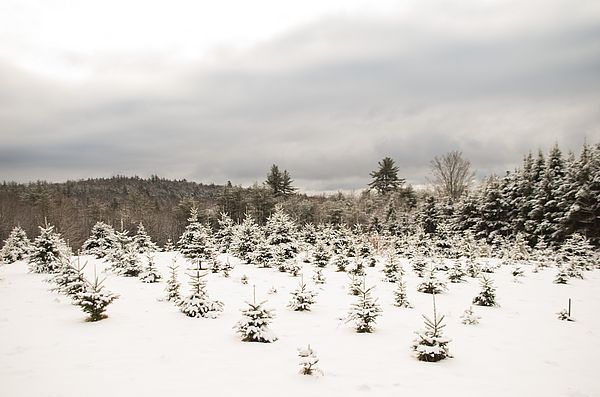As the song goes, it’s beginning to look a lot like Christmas. That means houses bejeweled with lights, decorative poinsettias, and of course, Christmas trees. The Christmas tree tradition dates to at least 16th century Germany, and trees were used in winter solstice festivals for even longer. Suffice to say, Christmas trees provide an historic look and smell to the season.
At the Monadnock Conservancy, we are always looking for ways to reduce our environmental footprint. Recently we asked our forestry experts a simple question: Is there a way to make this yearly tradition more environmentally friendly? The answer was a resounding “yes!” Here’s some information to help you have your holiday cake, and compost it too.
Live vs. synthetic?
The first tip is straight forward – live trees are better for the environment than fake trees. Of course, many people are allergic to live trees or have other valid reasons to buy synthetic. If you’re going to go the fake tree route, it is recommended that you buy a used tree and reuse it for as many years as possible. By reusing fake trees, or buying used fake trees, you’ll be helping to reduce the demand for a plastic product.
The devil's in the disposal
The best time to do something environmentally friendly with your live Christmas tree comes at the end of the holiday. First, remove everything man-made from the tree. Tinsel, the lights, that one rogue hidden ornament, everything should be removed. You can then use the tree for firewood or turn it into mulch or compost, ensuring your tree gets a second use. Many towns’ recycling centers in our region offer to chip or compost old trees for a nominal fee (it’s $2 in Keene).
But it can be easier than that to use your old tree in an environmentally friendly way. Old trees make excellent habitats for forest wildlife. If you have some woods to play with, you can leave your tree there. For rabbits and other small animals, old trees provide cover from predators. If woods aren’t an option, put your old tree near your bird feeder to protect smaller bird species from hawks and owls. In ponds, old trees are an excellent underwater habitat for small fish and macro invertebrates. Old trees have even been used in wetland restoration – as was the case in Louisiana after Hurricane Katrina in 2005.
Sustain-a-billy goat
Perhaps the most fun (and Instagram friendly) use for an old tree is feed for goats and livestock. Goats love to nibble on the soft branches. Deer and other livestock also enjoy the softer parts of the tree. Chickens love nibbling on pine needles – a great cure for a bored chicken. The only exception to this is if you are getting your tree from large wholesaler. These larger operations might spray the tree with fire retardant chemicals. This is uncommon for most of the lots in New Hampshire, but something to check on when you buy your tree. For the most part, chucking your old tree in the woods, or asking your local farm if they want it for feed, is as good a solution as any.
Avoid the landfill!
There is only one thing you want to avoid after the holiday season: landfills. If you have curbside pickup, look to see what is being done with Christmas trees. If no information is provided, it might be better to find an alternative to just throwing it away. In many cities, tree collection will be separate from trash collection, giving local authorities an opportunity to mulch the trees without them ending up in a landfill. Always good to check with your trash collector.
Trees in the region
Finally, a fun fact from our tree experts: there are two types you’ll most likely encounter grown and sold in the region – balsam fir and Fraser fir. Although almost identical to the eye, balsam fir is native to this area, while Fraser fir is native to a few high-elevation pockets of the southern Appalachian Mountains. Both are great choices though, and there’s no preference from our team on this decision.
